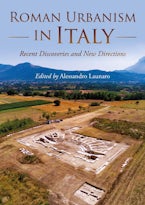This volume contains ten papers reflecting current aspects of the debate in theoretical Roman archaeology. They include papers on what the pottery finds from the Nepi Survey Project can tell us about how the local landscape was used and inhabited, poliadic deities in Roman colonies in Italy, Pompeii, the practice of the recycling of architectural materials and personal adornment concerning textile remains and brooches.
1. Interpreting a Ceramiscene Landscape – the Roman Pottery from
the Nepi Survey Project (Philip Mills and Ulla Rajala)
2. In excelsissimo loco – An Approach to Poliadic Deities in Roman Colonies
(Marion Boos)
3. Globalisation, Consumerism and the Ancient Roman Economy: A Preliminary Look at Bronze and Iron Production and Consumption (Melissa L. Ratliff)
4. Meaningful Insula: Bridging the Gap between Large and Small Scale Studies
of Urban Living Conditions (Heini Ynnilä)
5. Doors in Domestic Space at Pompeii and Herculaneum: A Preliminary Study
(M. Taylor Lauritsen)
6. Approaching Architectural Recycling in Roman and Late Roman Villas
(Beth Munro)
7. Nineteenth-Century Labour Figures for Demolition: A Theoretical Approach
to Understand the Economics of Re-use (Simon J. Barker)
8. Cloth and Clothing from Cemeteries in Noricum (Karina Grömer and Eva Hölbling-Steigberger)
9. Pinning Down Identity: The Negotiation of Personhood and the Materialisation
of the Late Iron Age and Early Roman Severn Estuary (Caroline Pudney)
10. British Emigrants in the Roman Empire: Complexities and Symbols of Ethnic Identities (Tatiana Ivleva)












